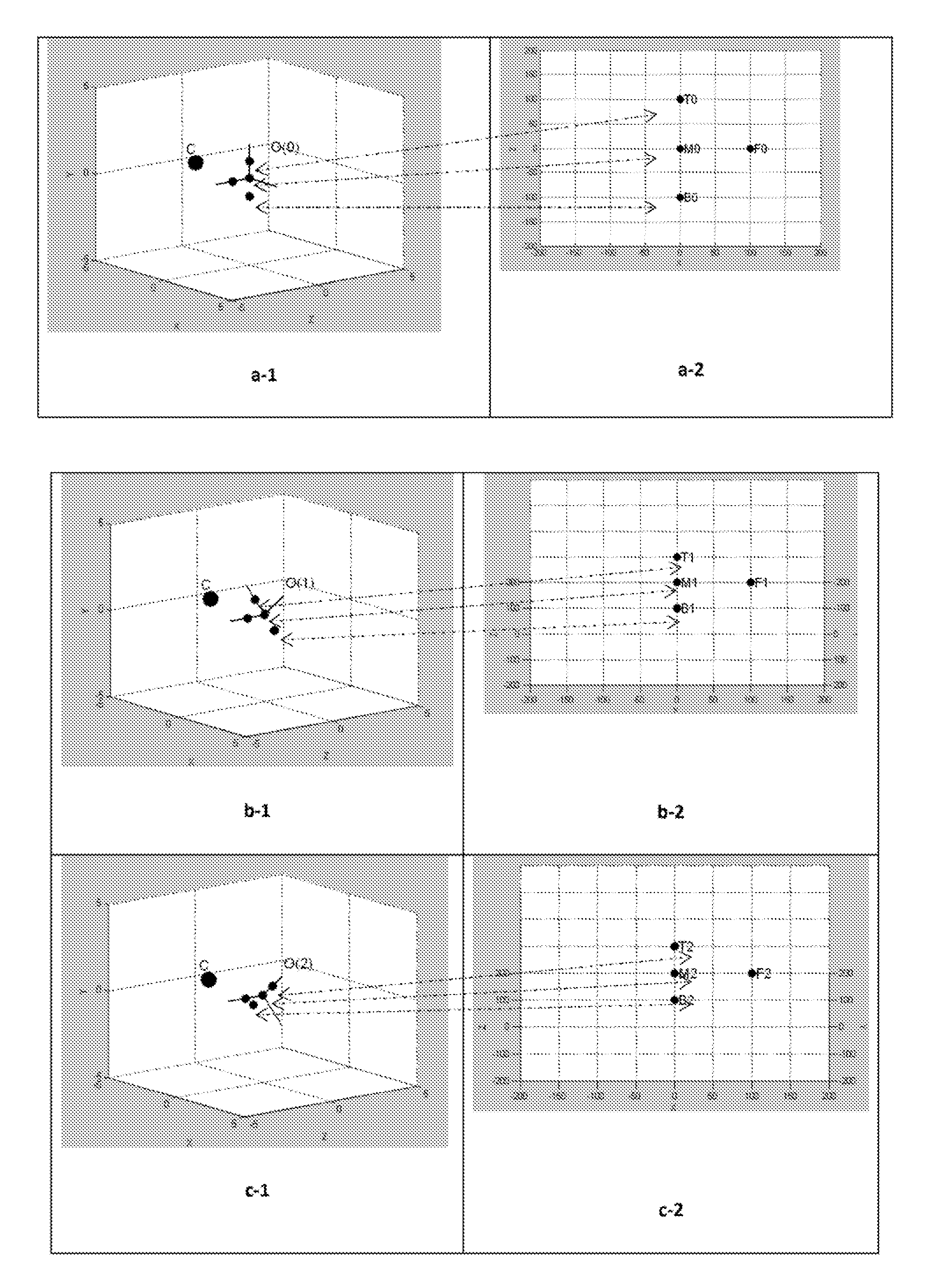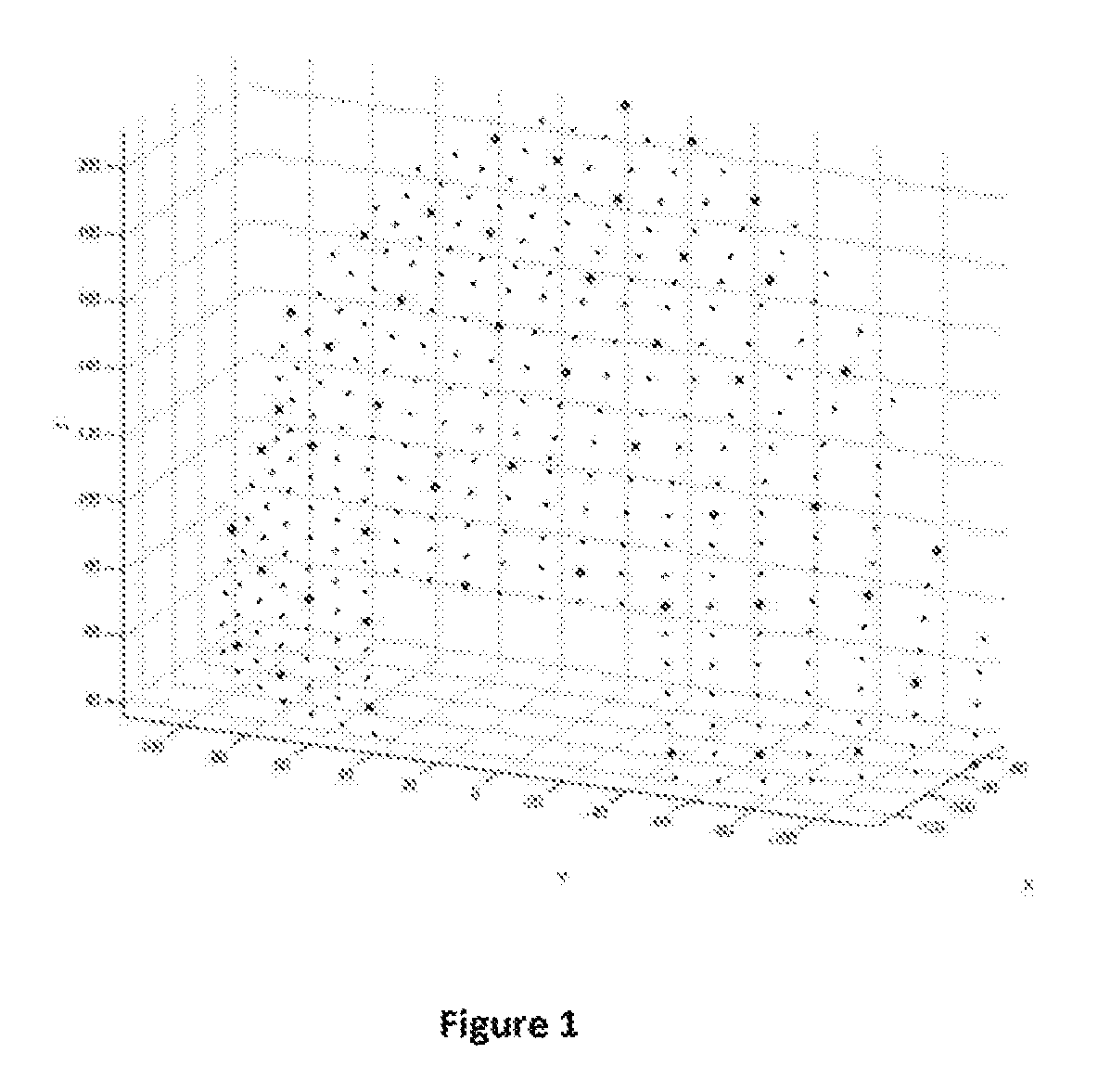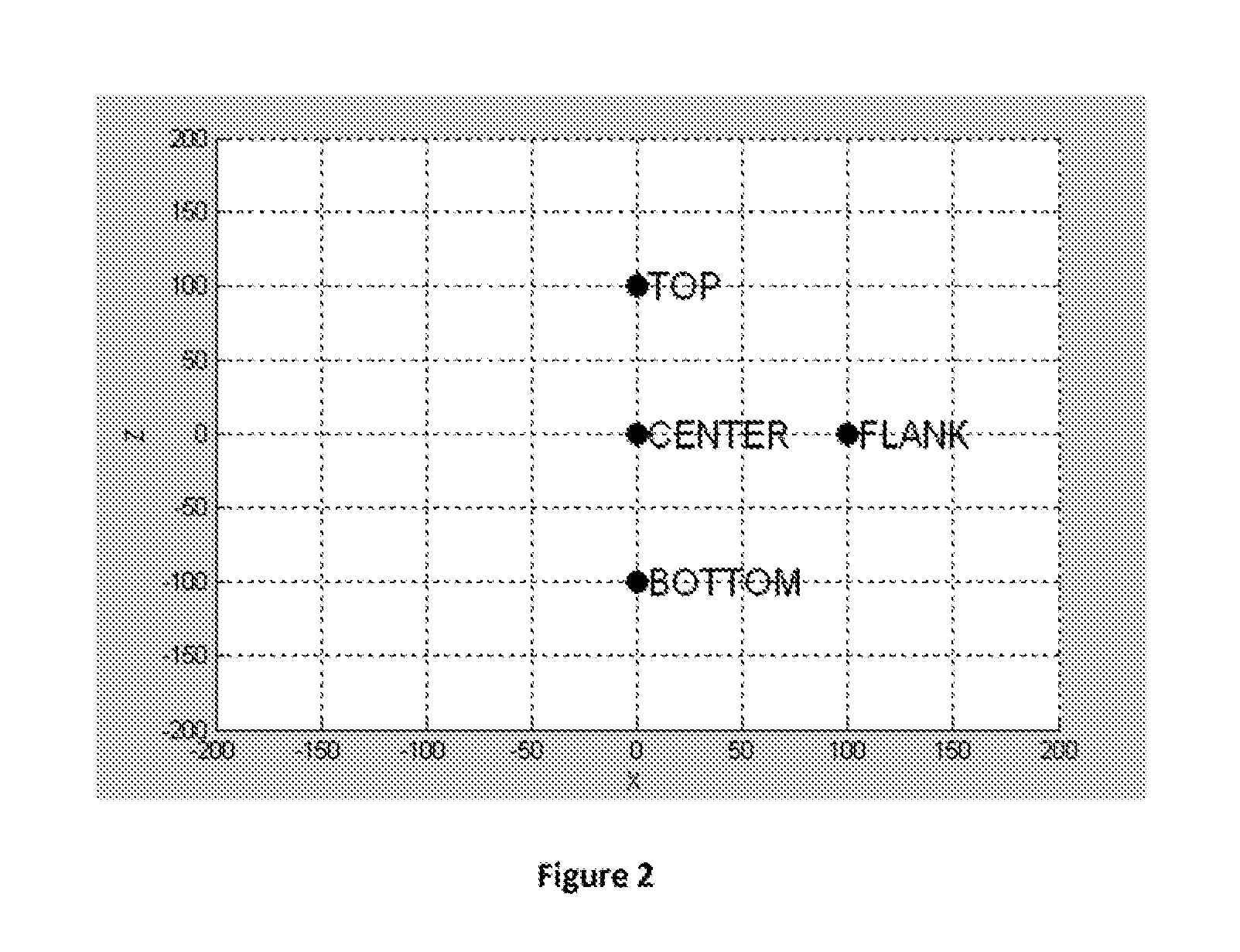Pose determination from a pattern of four LEDs
a technology of pose determination and leds, applied in the field of computation, can solve the problems of inability to use, require a long time, and require effor
- Summary
- Abstract
- Description
- Claims
- Application Information
AI Technical Summary
Benefits of technology
Problems solved by technology
Method used
Image
Examples
Embodiment Construction
[0039]A method for solving correspondence problem (100) comprises the steps of,
Turning current LED group on (101),
Determining if all 4 LEDs in the current LED group are visible by camera (102),
Identifying center LED if all the LEDs in the current LED group are visible (103),
Determining if the center LED is ambiguous (104),
Identifying flank LED if the center LED is not ambiguous (105),
Identifying the top and bottom LEDs (106),
Calculating the pose of tracked object using the calculated correspondences (107),
Determining if the calculated pose is ambiguous (108),
Switching to a new LED group if all the LEDs in the current LED group are not visible or the center LED is ambiguous or the calculated pose is ambiguous (109).
[0040]In step 101, we turn on LED in the current LED group so that their projections on 2D space can be seen. Each group preferably does consist of four LEDs selected in a particular pattern on the tracked object. Selection of the four LEDs to be lit stem from two main fac...
PUM
 Login to View More
Login to View More Abstract
Description
Claims
Application Information
 Login to View More
Login to View More - R&D
- Intellectual Property
- Life Sciences
- Materials
- Tech Scout
- Unparalleled Data Quality
- Higher Quality Content
- 60% Fewer Hallucinations
Browse by: Latest US Patents, China's latest patents, Technical Efficacy Thesaurus, Application Domain, Technology Topic, Popular Technical Reports.
© 2025 PatSnap. All rights reserved.Legal|Privacy policy|Modern Slavery Act Transparency Statement|Sitemap|About US| Contact US: help@patsnap.com



